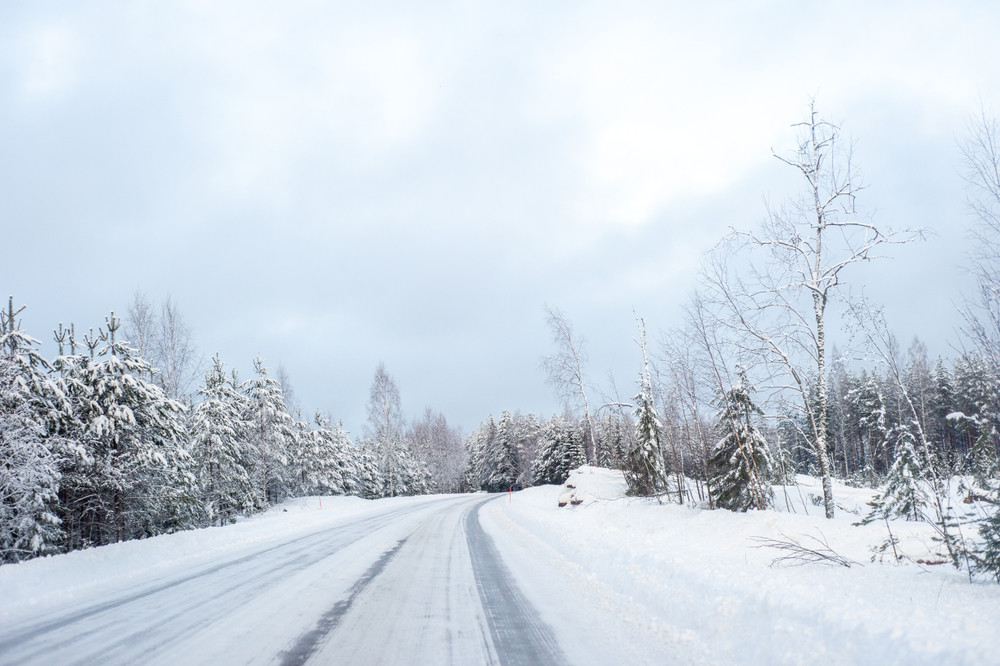
Must-Have Checklists for Staying Safe on the Road this Winter
Thursday, November 22, 2018
Winter is here and along with it comes icy roads and snowy streets. Driving during the winter months can prove to be the most stressful time of year for automobile owners.
Car companies have made tremendous strides in adding safety equipment to our vehicles. From traction control to e-Assist, today’s automobiles are safer than ever. However, safety behind the wheel still ultimately remains with the driver.
Safety begins before even placing the key in the ignition – or pressing the start button. We have you covered with our must-have checklist for staying safe on the road this winter.
The Pre-Drive Checklist
Many organizations provide advisory notices stating the importance of regular maintenance, regardless of the season. With the harsh cold and freezing elements of winter, proper maintenance becomes even more important during the winter. After all, preventing problems before they happen is the smart way to stay safe.
Autumn is a great time to inspect the key components of your vehicle. Most checks can be done at home in the safety of your garage. For those who lack the mechanic’s gene, visit your local, trusted garage for a pre-winter check-up. Just be sure each of the following components is checked:
- Batteries – Extreme changes in weather can do a number on automobile batteries. If left unchecked, you could be left stranded at the most inopportune time. Have your battery checked for holding its charge to make sure your vehicle will start the next time you are ready to
- Battery cables/terminals – Check to ensure all terminal connections are secure and cables are in good shape. If you are unfamiliar with automobile electrical power, be safe and have these items checked by a reputable mechanic.
- Drive belts – Belts drive a number of key auto components, including alternators that recharge batteries to power steering systems. Check belts for cracking or wear and have them replaced before they break.
- Engine hoses – Similar to drive belts, the rubber material of engine hoses makes them susceptible to cracking over time. Engine hoses move coolant through the engine and are vital to keeping your motor moving. Have any worn or cracked hoses replaced.
- Tire tread – Icy, snow, and sleet can make road conditions dangerous. Have your tires checked for excessive wear as they serve as the connection between your vehicle and the Worn tires are extremely hazardous and cause accidents at even slow speeds.
- Tire pressure – As the temperature drops, so too can your tire pressure. Before your tires have an opportunity to warm up, make sure they are set at the recommended pressure located on the door jamb of most vehicles.
- Coolant levels – Even though it may be cold outside, the friction your engine creates still needs to be cooled, even in freezing temperatures. Make sure your coolant system and reservoir are filled to their proper levels.
- Lights – If other drivers cannot see you, they may be unable to avoid you. Using your garage wall, check your headlights for brightness and proper alignment. And, with the help of a friend, check to ensure your tail and turning lights are working properly.
- Washer fluid – Winter precipitation can make the roadways a mess. Throw in ice melt or salt and your windshield will get dirty before you know it. Fill your washer fluid reservoir as necessary with washer fluid, not water as water will freeze when the temperature drops.
- Wiper blades – Every wipe of your wiper blades should clean your windshield. Worn wiper blades can actually make visibility worse. Check to make sure your wiper blades are in good working order before you need to use them.
- Brakes – Stopping is as important as going, if not more important. Have a certified technician check your automobile brakes for wear. Have the pads changed and rotors cut if needed so you can avoid running into an accident.
Emergency Kit Checklist
Even a well-maintained vehicle can become stranded. Accidents, closed roads, and impassable streets happen more often during the winter. Make sure you are prepared by having an emergency kit at the ready including these items:
- Flashlight
- Ice scraper
- Snowbrush
- First aid kit
- Snow shovel
- Essential tools
- Gloves, hats, and blanket
- Roadside markers or flares
- Traction mats, cat litter, or sand
Some agencies recommended keeping drinking water and snacks in your vehicle as well in case you are unable to seek shelter nearby. Keep in mind your emergency kit may also be needed to help not only yourself but fellow stranded travelers as well.
Drive Safe
Being prepared is just the first step in keeping safe during winter driving. Before you jump in your vehicle, be sure to check the weather ahead of time to avoid dangerous conditions. And, once you are on the road, keep a safe distance from other drivers and avoid distracted driving.
To learn more about staying safe and getting some coverage this winter, contact ProtectiveAgency.com or call us at (877) 739-9367. Our licensed insurance team will be happy to answer any questions you have.
